Are You Buying LED Lamps or LED Myths
Are you buying LED lamps or LED Myths? Find out and avoid buying LED fables.
The brand-independent specialists at Ledgnd have observed that providers of LED fixtures often exaggerate and present unclear specifications to make their products appear more favorable. Unfortunately, this often comes at the expense of the grower and the reputation of LED technology. Therefore, we aim to provide clarity. The influx of new entrants in the booming LED market for horticulture inevitably leads to grand stories and promises of golden opportunities. What is true, and what should be taken with a grain of salt?
Our goal is to prevent growers from buying a pig in a poke! In this article, we explain the light output and efficiency of a fixture. We also delve into the variables and specifications offered by LED fixtures. What do these specifications mean, and how should horticulture growers interpret them?
“Our goal is to prevent growers from buying a pig in a poke!”
Lumen versus micromole per second
In horticulture, the variables lumen and micromole per second (µmol/s) are frequently used. Lumen refers to the brightness of light as perceived by the human eye. In contrast, µmol/s measures the density of light in the spectrum that triggers photosynthesis in plants. Therefore, in the horticulture sector, lumen is not a relevant variable; instead, we focus on µmol/s. Unfortunately, we still see lighting plans where lumen or lumen per watt is used to indicate light output. In our opinion, this is a cunning trick by LED suppliers to make it difficult for growers to compare different suppliers. It is relatively easy to influence the amount of lumen a fixture produces by incorporating more green light in the spectrum than blue/red light. A fairer metric for comparing plans is micromole per second (µmol/s). This allows us to easily calculate the mol per day and aim for consistent daily values. For this reason, Ledgnd requests all LED suppliers to use µmol/s in lighting plans for the horticulture sector.
‘A fairer metric for comparing plans is micromole per second.'”
Efficiency
Besides the actual output, it is also crucial to understand how efficiently a fixture uses the energy it consumes. This can be compared to driving a car: the faster you drive, the more fuel you consume, but the increase in consumption is not linear; it is exponential. You may reach your destination sooner, but at what cost? Was the fuel consumption and potential fines worth it? This principle also applies to energy consumption in LEDs. However, for growers, the extra consumption does not always correlate with potential gains (higher yield, stronger plants). We are eager to share our knowledge on the efficiency of LED fixtures with you.
Efficiency, expressed in micromole per watt (µmol/w), is a commonly used term in horticulture. Efficiency is derived from the output of the fixture.
“Therefore, it is essential to understand how the efficiency of a fixture is influenced.”
Efficiency depends on several factors, including:
-
- The current passing through the LED
-
- The light spectrum applied
-
- The temperature of the LED
-
- The chosen driver
-
- The lens
-
- The number of operating hours
-
- The degradation (and thus quality) of the LED, which also affects its lifespan
The current:
We previously compared the consumption of an LED to that of a car. In the LED world, we refer to the current; the higher the current through the LED, the less efficiently it uses this power. By counting the number of LEDs in the fixture and measuring the total power consumption in watts, you can calculate the drive current of the individual LED. However, this becomes more complex when different LED colors are used, each operating at different drive currents.
The Spectrum:
LED color chips also have varying efficiencies. This can differ depending on the brand, current, and temperature of the LED. If a fixture is composed of different colors, this affects the efficiency.

Some suppliers claim to have a chip that mimics the solar spectrum. While it is true that some chips come close to the solar spectrum within the PAR 400-700nm range (Photosynthetically Active Radiation; the light spectrum that plants respond to), this does not equate to the solar spectrum. This is a false claim because these chips lack far-red and UV content, which the sun does have.
“This is a false claim.”
A good metric, however, is the PSS value, which provides insight into the phytochrome balance and thus the ratio of red to far-red. The sun has a PSS value of 0.72, which we have only seen in high-quality solar spectrum lamps used in research centers. However, these lamps are not suitable for assimilation lighting applications due to their high cost.
“A good metric is the PSS value, which provides insight into the phytochrome balance and thus the ratio of red to far-red.”
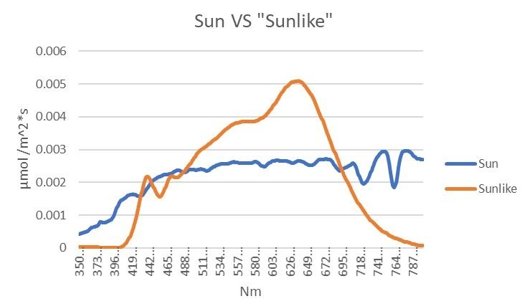
The temperature:
A higher temperature in the LED reduces its efficiency. The extent of degradation varies by LED color and brand. Ledgnd has seen practical examples where an LED temperature increase from 70 to 100 degrees can reduce efficiency by 20%. Cooling technology and ambient temperature significantly influence the LED’s temperature.
The driver:
The brand and type of driver also affect efficiency. Ledgnd regularly observes a 5% energy loss because most drivers can only convert peak current to constant current at 95% efficiency.
The lens
The lens also impacts the lamp’s efficiency. When different color chips and a glass plate are used in the fixture, it is often challenging to achieve a uniform spectrum at crop height. Using a lens that evenly distributes light with a specific beam angle can significantly improve results. In practice, we see that light loss due to lens use ranges from 5 to 12%, whereas it is about 3% with a glass plate. The best fixture depends heavily on the specific situation.
Number of operating hours:
Yes, LEDs also degrade over time. The degradation of the LED depends on the quality of the LED chip and the temperature, but there is also a difference in lifespan per color:
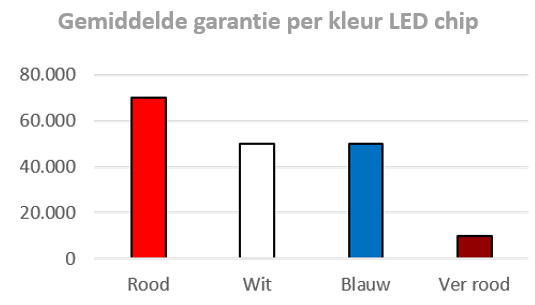
When different LED chips are used in the fixture, this affects the spectral ratio over time. If far-red chips are used in the fixture, they will degrade faster than red LED chips. LED suppliers often play on this regarding warranty. Ledgnd assists growers in interpreting spectral warranties to avoid surprises in the future.
In summary, not only is the efficiency of the LED important, but all independent variables also influence the fixture’s efficiency. However, suppliers sometimes refer to the LED’s efficiency and other times to the fixture’s efficiency. This is like comparing apples to oranges. We wonder how a grower or growers’ association can gather, interpret, and evaluate all this information.
“This is like comparing apples to oranges.”
The ddded value of Ledgnd:
To professionally measure efficiency and spectrum, you need access to a Goniophotometer. “We have access to such a meter and have fully measured the lamps of the major players in the market,” says Ramón van de Vrie (Operational Director). Additionally, with our experience, knowledge, expertise, and network, we can make a good assessment of the efficiency of new fixtures.
When considering the transition to LED, you have various options regarding fixture efficiency. This does not mean that the fixture with the highest efficiency is the best choice for your needs and/or greenhouse. Fixtures can be classified into different groups, such as the “cost-effective choice” or the “High Efficiency” and thus more expensive choice. For example, if we look at a 95% red and 5% blue lamp, you can buy it with an efficiency ranging from 2.9 to 4.0.
A fixture with an efficiency of 2.9 will use fewer LEDs, increasing the current per LED. Comparing the cost of a 1000w fixture with an efficiency of 2.9 to one with an efficiency of 4.0 can quickly show a 25 to 35% difference, while the extra energy costs may not always outweigh the additional purchase costs. The Ledgnd Team looks for the optimal lamp for your specific business needs and provides brand-independent advice, allowing you to make decisions based on facts rather than myths. This significantly reduces the risk of buying a pig in a poke.
The Ledgnd Team looks for the optimal lamp for your company-specific issue and provides brand-independent advice, allowing you to make decisions based on facts rather than myths.
Are you considering the transition to LED and in need of brand-independent advice? We would be happy to visit you to assess your needs and outline the possibilities. Please feel free to contact us.
New articles
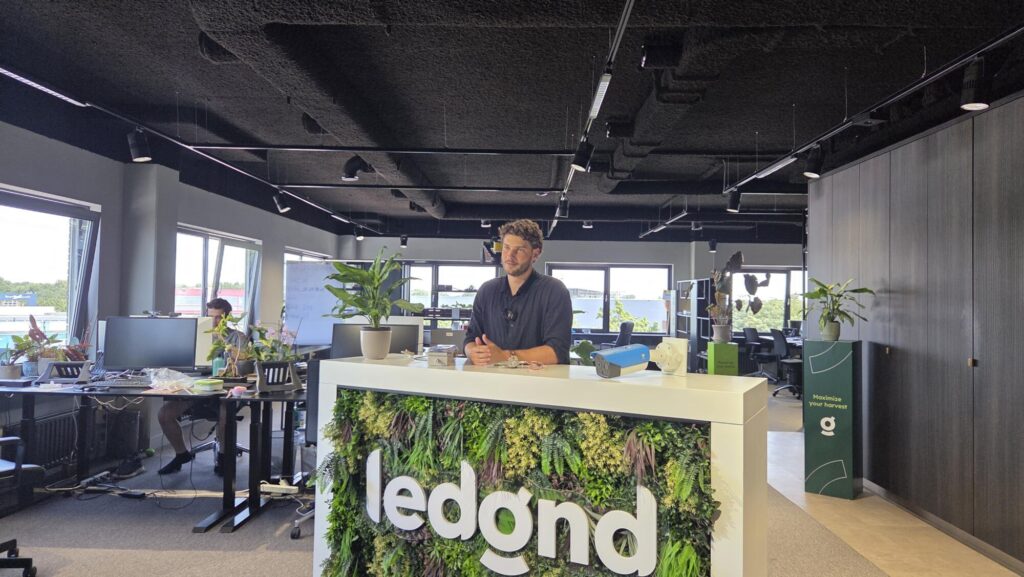
How 2025 became the year of plant feedback, sustainability and collaboration
2025 was a year of contrasts for many growers: rising costs and stricter regulations, while at the same time more opportunities than ever to gain control of the crop using data. At Ledgnd, the year wa…
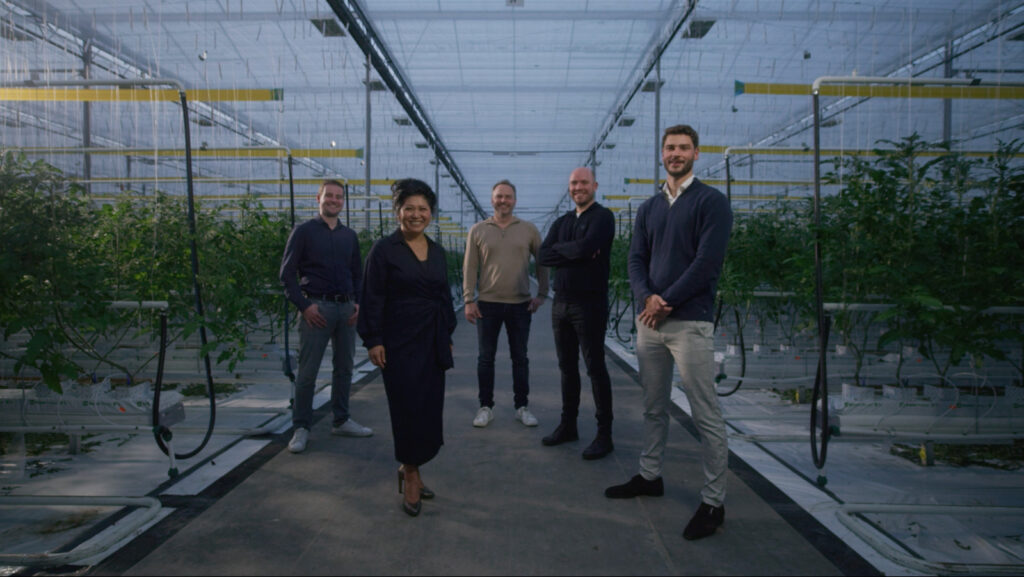
“From pioneering to professionalising”, Matthea Rijneker reflects on her first six months as CEO of Ledgnd
At Ledgnd, 2025 was a year of change. Not only within the MyLedgnd platform, but also within the organisation itself, which went through a clear strategic shift. Midway through the year, Matthea stepp…
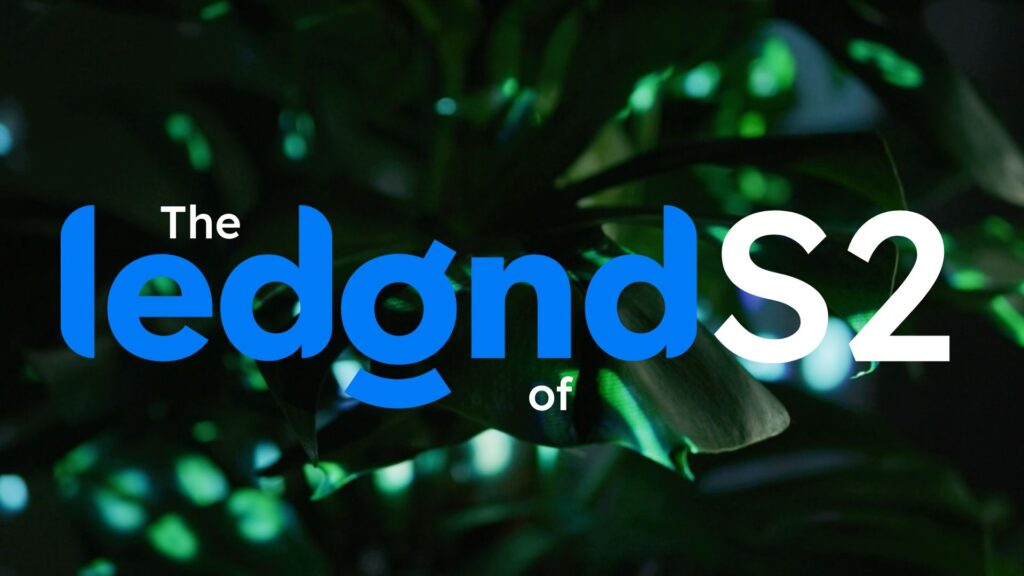
Ledgnd launches season 2 of video series “The Ledgnd of”
Ledgnd has launched the second season of its video series “The Ledgnd of”. The series takes a closer look at the key concepts and innovations shaping modern greenhouse horticulture. In the new season,…
Read more

How 2025 became the year of plant feedback, sustainability and collaboration
2025 was a year of contrasts for many growers: rising costs and stricter regulations, while at the same time more opportunities than ever to gain control of the crop using data. At Ledgnd, the year wa…

“From pioneering to professionalising”, Matthea Rijneker reflects on her first six months as CEO of Ledgnd
At Ledgnd, 2025 was a year of change. Not only within the MyLedgnd platform, but also within the organisation itself, which went through a clear strategic shift. Midway through the year, Matthea stepp…

Ledgnd launches season 2 of video series “The Ledgnd of”
Ledgnd has launched the second season of its video series “The Ledgnd of”. The series takes a closer look at the key concepts and innovations shaping modern greenhouse horticulture. In the new season,…
Do you want to know more?
Interested in what Ledgnd can do for you? Leave your phone number, and we will contact you as soon as possible for a non-binding informational conversation

